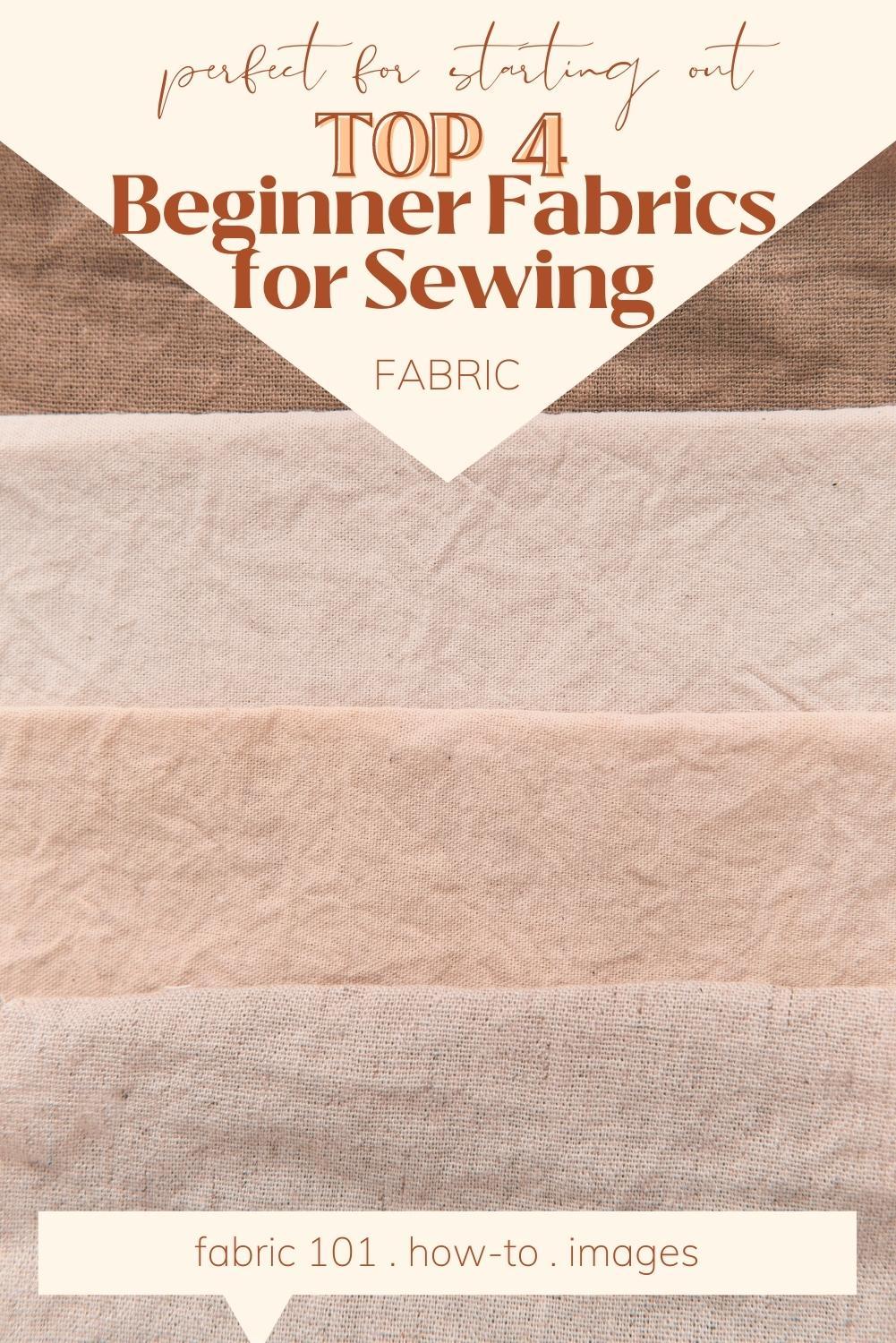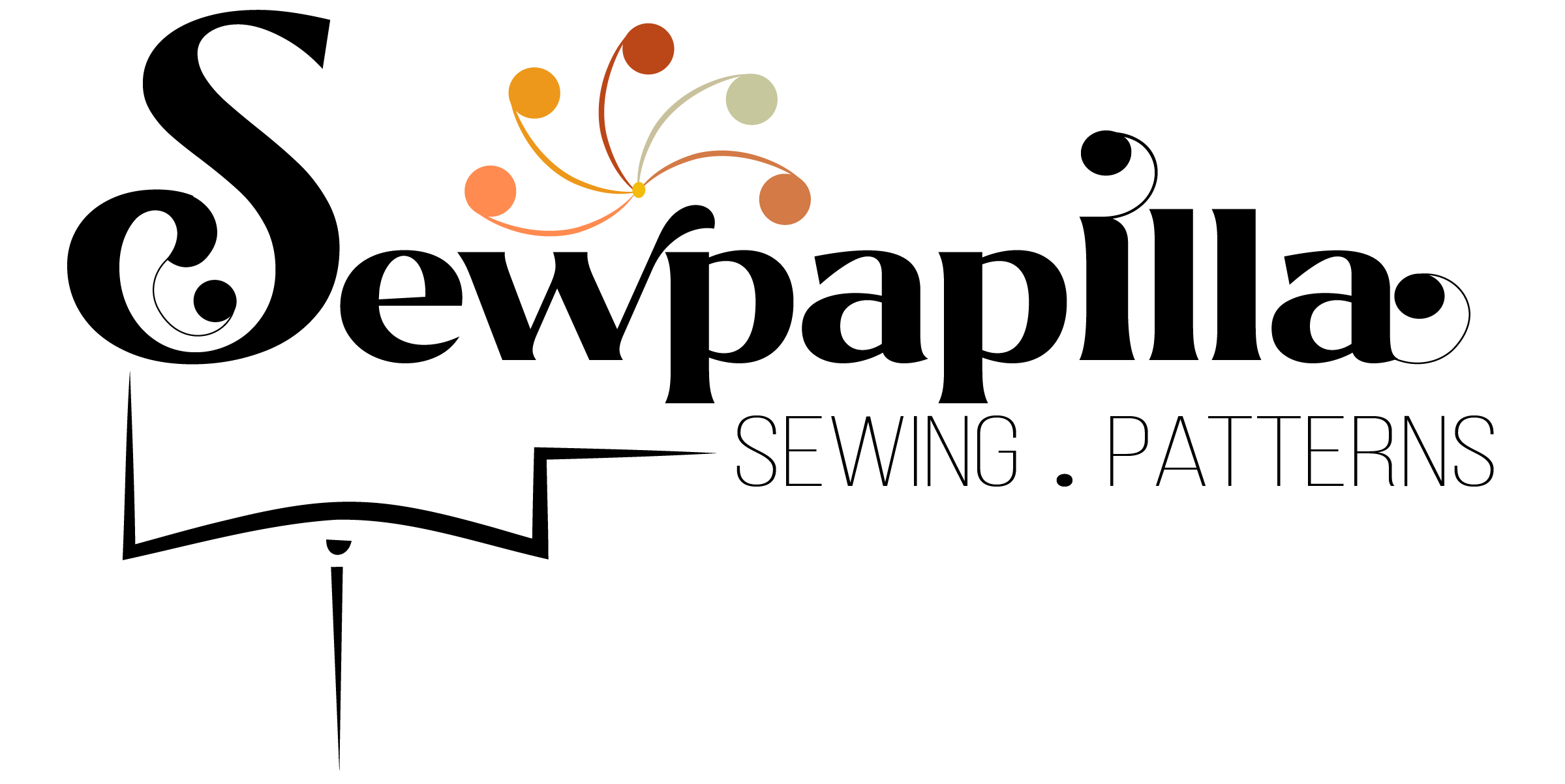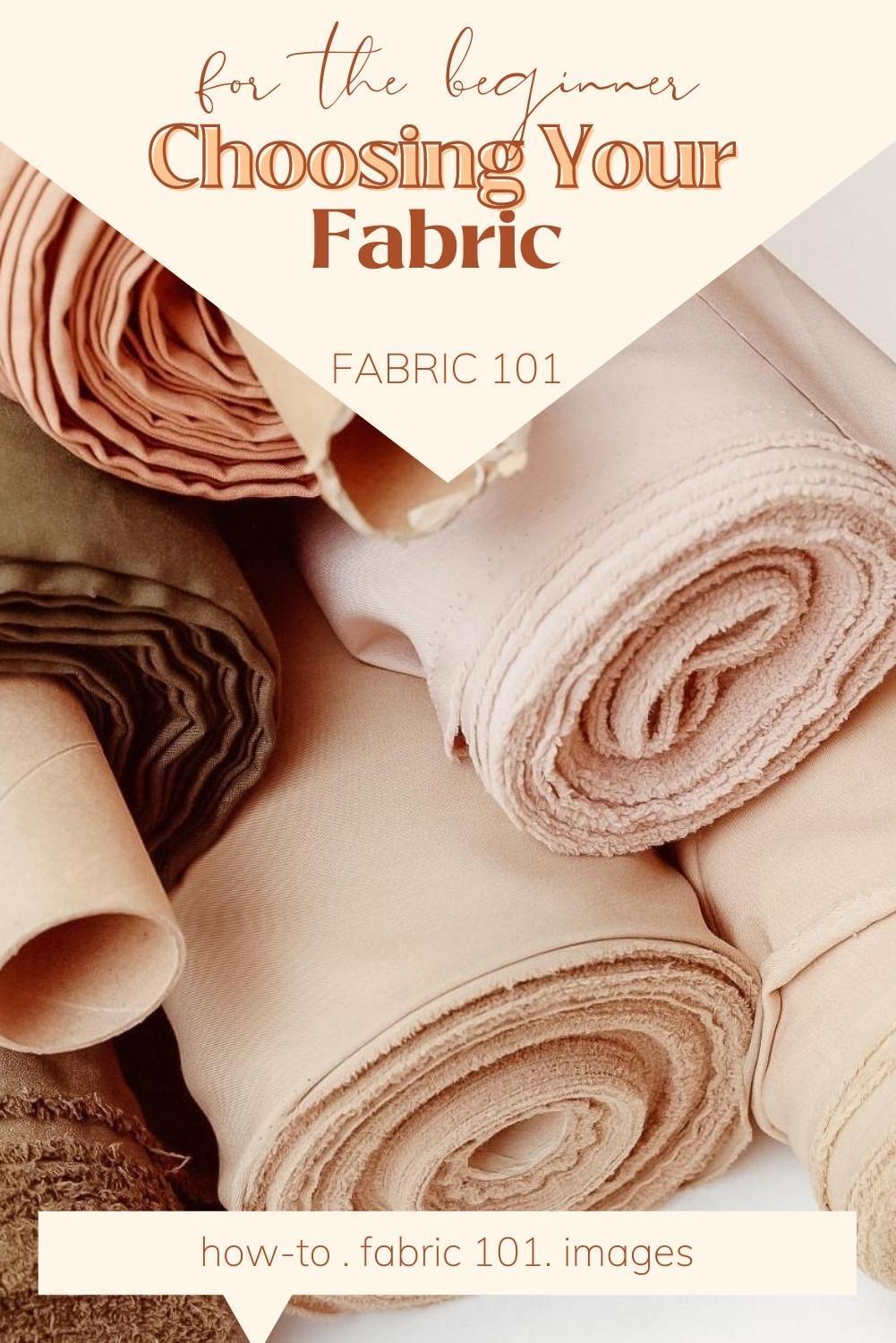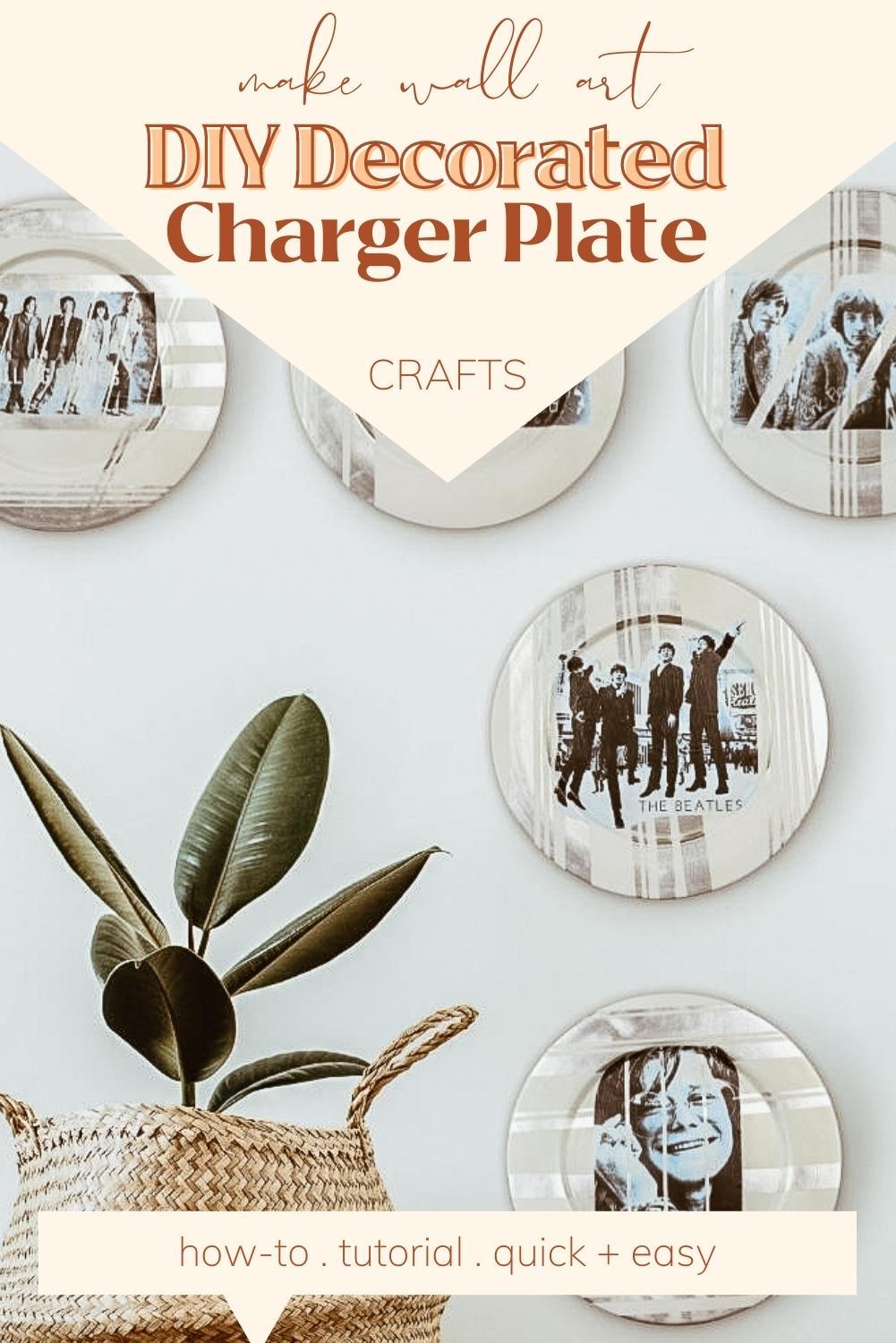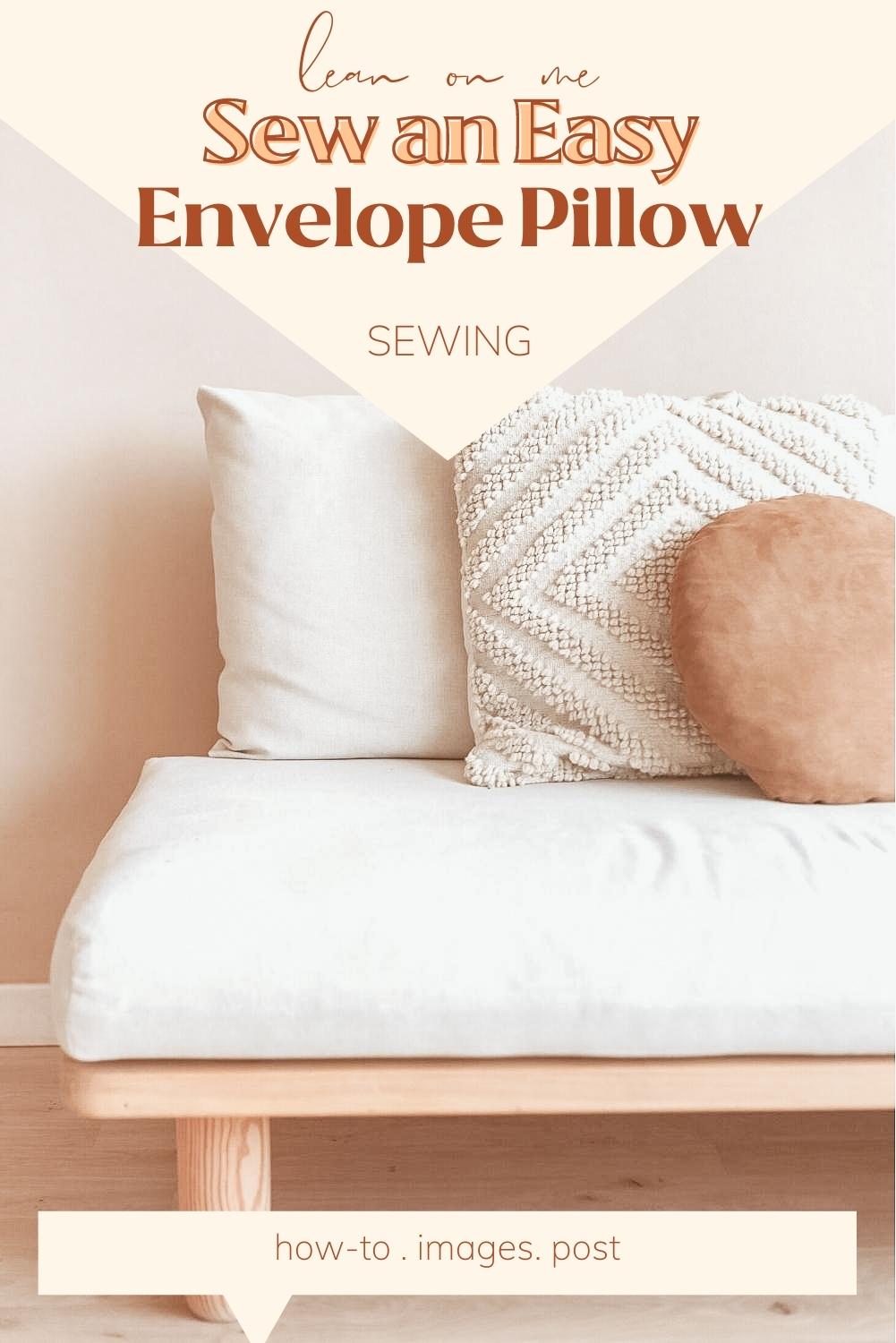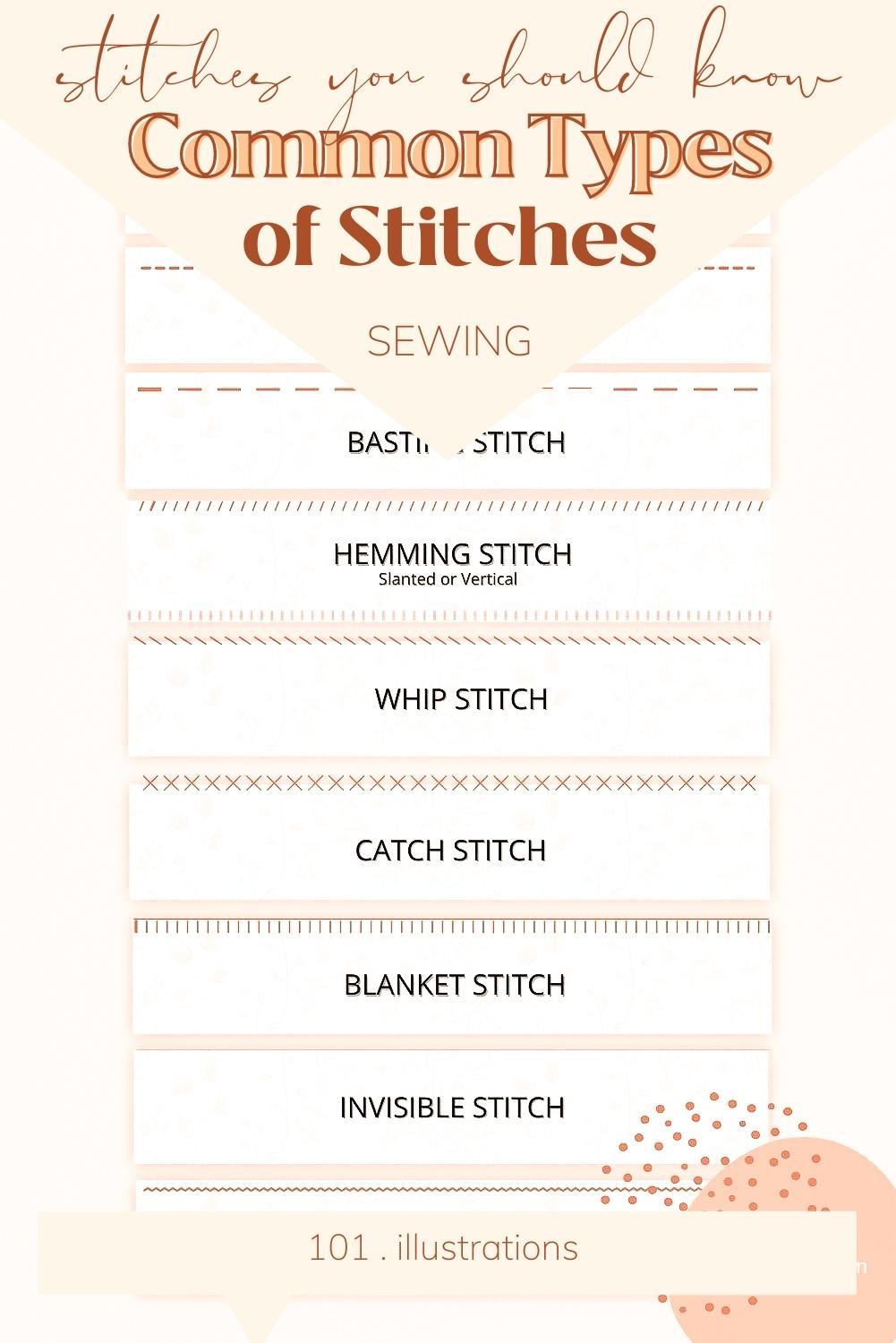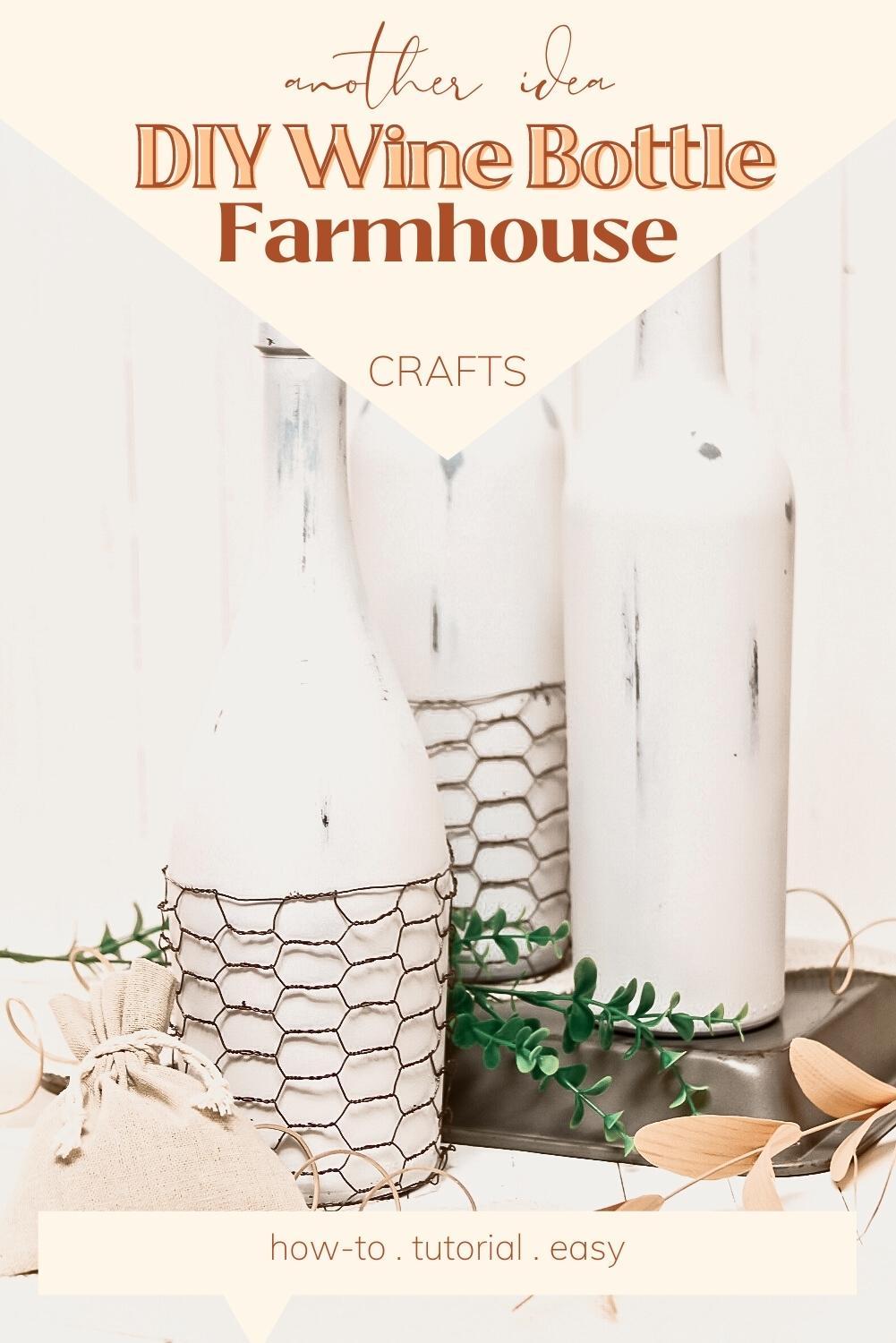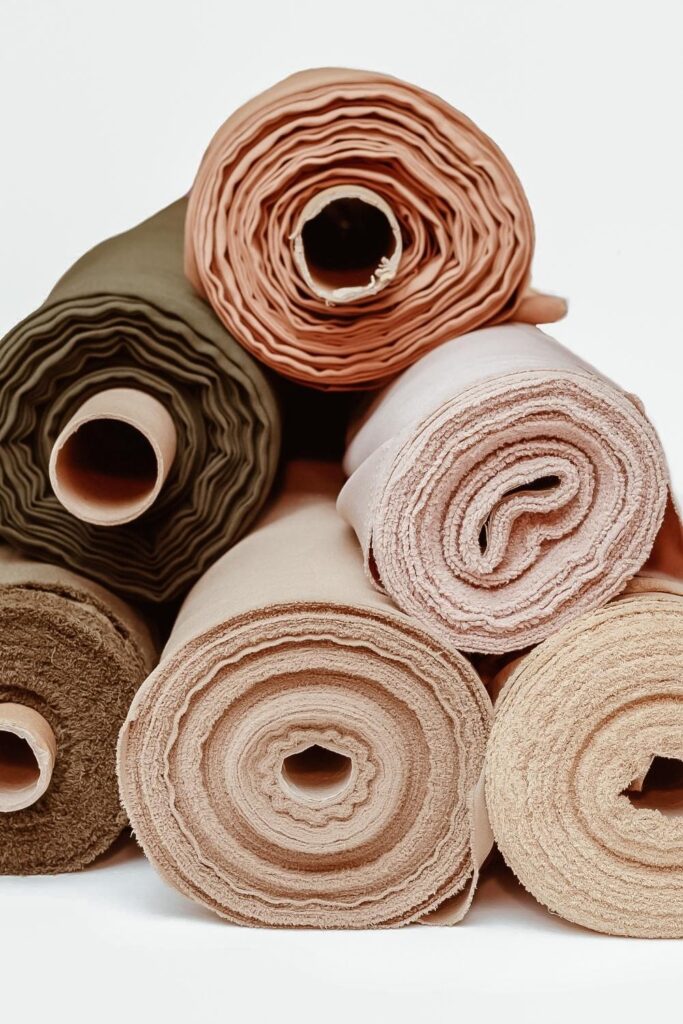
The Top 4 Beginner Fabrics to Sew
The top 4 beginner fabrics to sew with when first starting out is today’s post’s topic.
I know what you’re thinking; Your sewing curiosity was sparked by fantastic sewing blogs, browsing Youtube channels, or a family member inspired your creativity, and you want to try it.
Either way, I’m so happy for you! You’re going to love it!
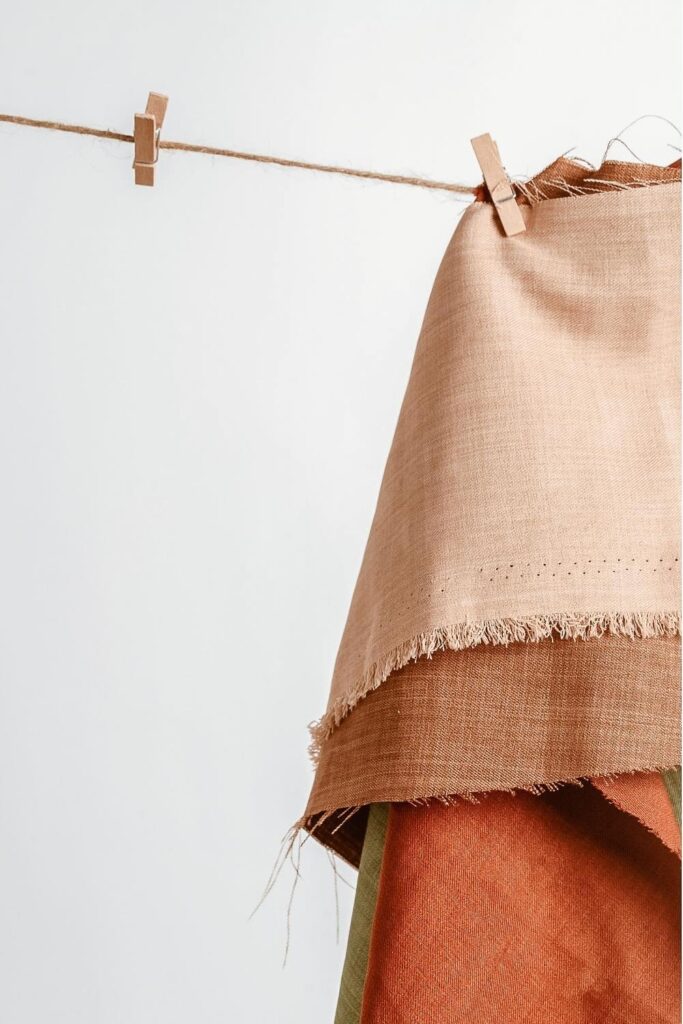
Beginner Fabrics to Sew: Choosing fabric
And now you’re thinking about which fabric is best for beginners because you’re unsure where to start.
My first trip to the fabric store was overwhelming because I didn’t know which fabric to choose. Just know that you’re not alone; we’ve all been there. So I’m here to help!
My best advice for beginners is to start out small at first until you develop your skill, and don’t be in a hurry. Read more on choosing your fabric here.
If you need help with selecting sewing tools, read this post here.

Beginner Fabrics: Are there any fabric characteristics I should consider??
There are many excellent beginner fabric options to look for and many different opinions floating on the internet about starter fabric for beginners. The key is to decide which material makes you the most comfortable to sew for your sewing project.
When choosing fabric, you’ll want to look at specific characteristics.
Some characteristics to look for when deciding on fabric are:
- Is the material stable, stretchy, or slippery?
- Will this fabric frey after cutting?
- Does this fabric wrinkle?
- Will this fabric shrink when washed?
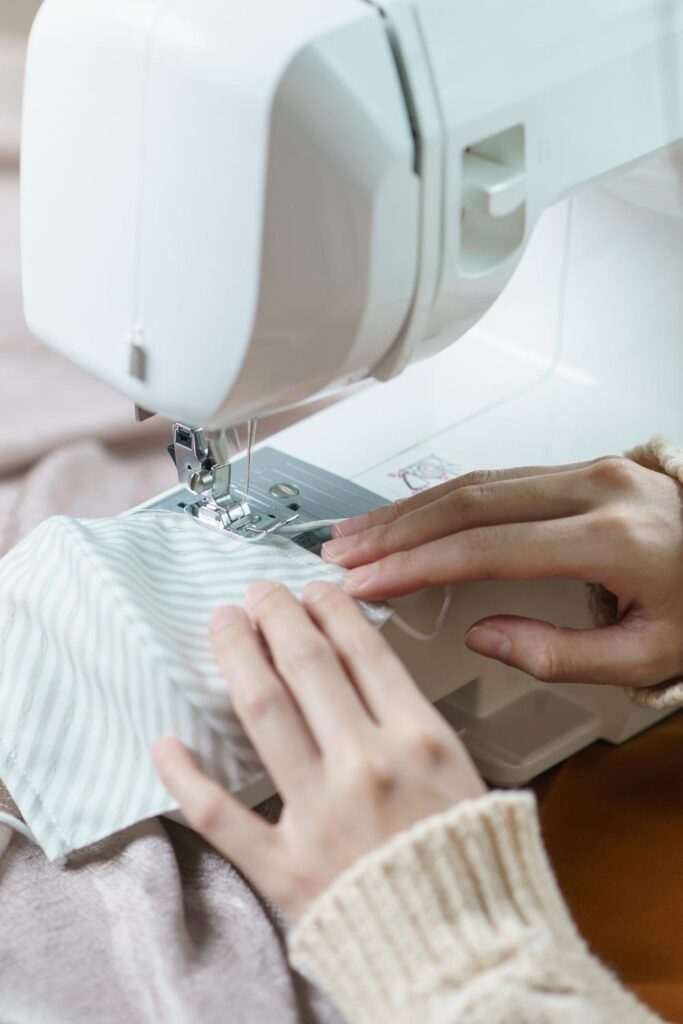
Beginner FabricS: FABRIC TYPE, MATERIAL, and DESIGN, What’s the difference?
Let me briefly explain a few things about the differences between fabric types, material, and fabric design. Knowing the differences will help you in choosing your starter fabric.
- Fabric type pertains to how the fibers are constructed for a particular look or feel.
- Material means the actual fabric content, like cotton, polyester, poly blend, etc.
- Lastly, fabric design is how the material is printed, weaved, or created.
Some examples of constructed fabric styles are:
- Woven Fabric has vertical and horizontal yarns interlaced to form a fabric.
- Non-Woven Fabrics, the entire piece of fabric is dyed after construction; a mix of fibers can create a multi-colored effect.
- Knitted Fabrics are loops of yarn interlocked to create a fabric.
Examples of natural fabric materials are:
- Cotton
- Linen
- Wool
- Silk
And examples of fabric designs are:
- Color Dyed Fabrics
- Printed Fabrics have patterns applied to the face of the fabric.
- Yarn-Dyed Fabrics are dyed before the fabric is constructed.
- Piece-Dyed Fabrics are the entire piece of fabric dyed after construction.
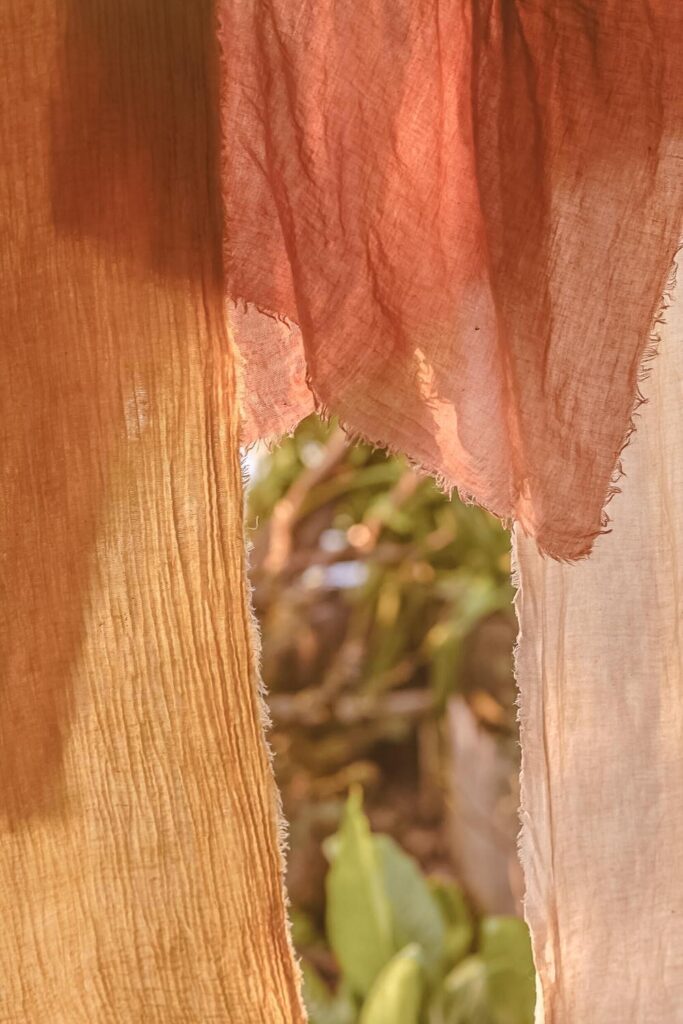
Beginner Fabrics: Which Starter Fabric Types Should I Sew?
The best fabric type a beginner sewer should start with should be woven cotton because it is very forgiving and easy to handle.
Woven fabrics are easier to sew on a sewing machine and cut. In comparison, knitted or jersey fabrics are stretchy and less forgiving.
My best advice is to start sewing small projects until you have more confidence and develop your sewing skill.
Beginner Fabrics: Why is choosing fabric important for a beginner?
Fabric is essential for any sewing project, and making the wrong fabric choice can significantly disappoint. Choosing the suitable fabric as a beginner is crucial because it determines your final project’s overall result.
Beginner Fabric: Caring for your fabric for Sewing
Washing fabric before starting your sewing project is essential. Having preshrunk fabric and washing it in cooler temperatures will help prevent it from shrinking more when you rewash your sewing project.
When pressing your freshly cleaned fabric, you get that polished look with flat seams like store-bought clothing. It also accurately cuts when your seams and creases are carefully pressed.
Top 4 Fabrics for Beginners
Now, let’s jump in and discuss the top four choices of beginner fabric I recommend for you to sew.
Muslin
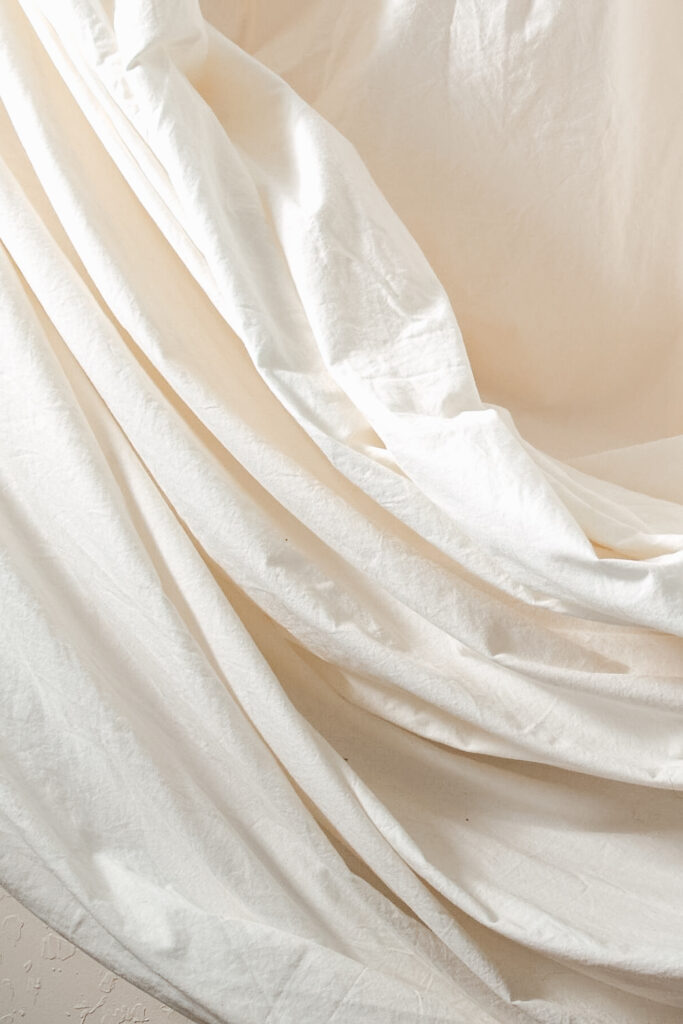
This material is a cotton fabric of plain-woven weave. It’s made in a wide range of weights, from delicate sheers to coarse sheeting.
Muslin is an inexpensive material that feels soft, and cutting and Sewing are very easy to practice. However, this fabric tends to shrink and wrinkles easily. To avoid shrinkage, wash in cooler temperatures.
This fabric is mainly used to make test samples of garments by sewists, and I highly recommend you do the same.
You can make endless sewing projects such as apparel, small gifts, and lightweight curtains. Get creative and experiment with this fabric because it’s so forgiving.
Cotton Lawn
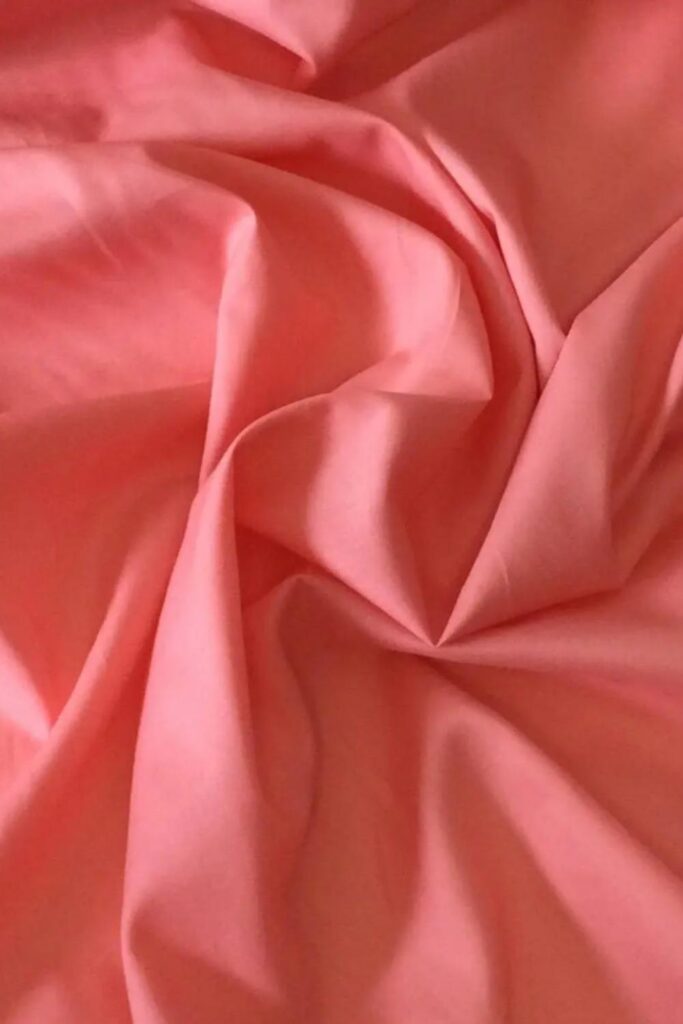
Cotton lawn is a lightweight fabric that ranges from soft to crispy but not too crispy to where it’s stiff, and it’s easy to cut.
It’s a silky substrate similar to voile or batiste with a bit more structure. The cotton lawn also resists wrinkles and has a low shrinkage rate.
Cotton lawn is perfect for warmer months and great for apparel, aprons, or pillow covers.
Broadcloth
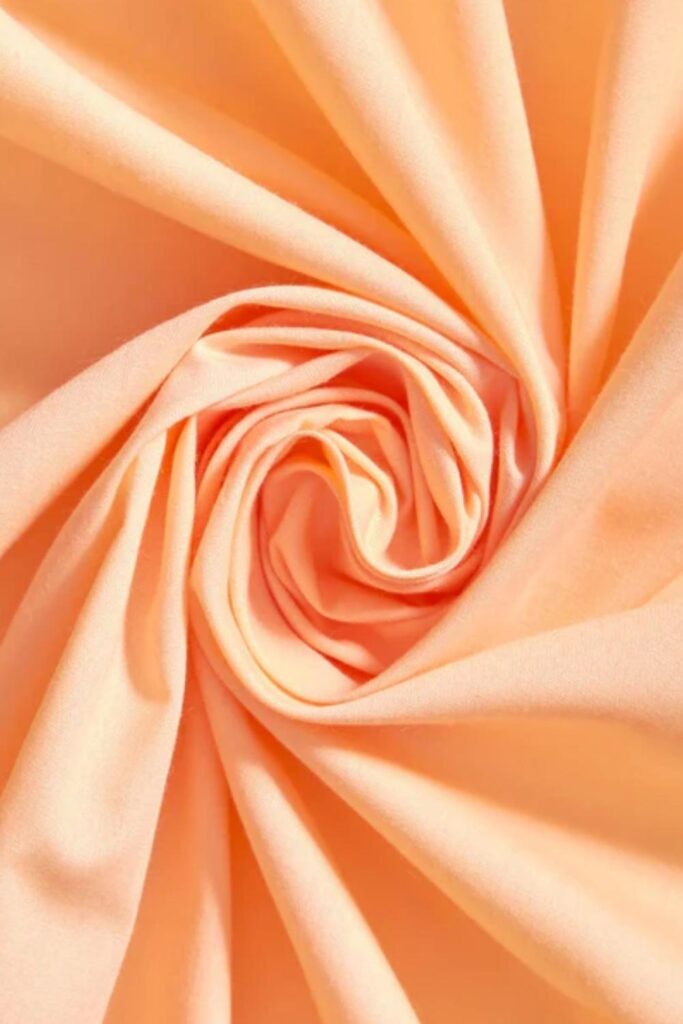
Broadcloth is a medium-weight cotton fabric that’s tightly woven and very sturdy. In addition, it’s thin, light, affordable, and doesn’t stretch.
I think it’s a great beginner option for beginners sewing blouses, skirts, bed linens, quilts, and many other crafts.
Avoid shrinkage; wash in cooler temperatures.
Cotton Quilting Fabric- Fat Quarters
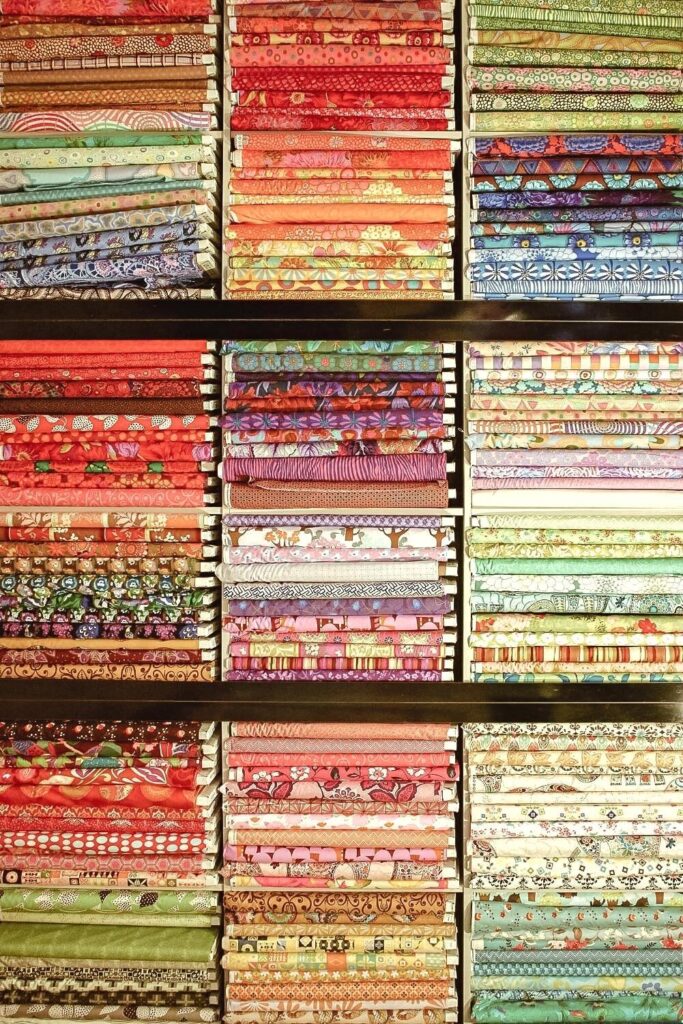
A Fat quarter is a one-fourth yard of fabric that is usually measured at 18 X 22 inches and is generally cut from the end of a bolt. The fat quarter may come in a bundle with various prints and may cost a little more, but it’s well worth it.
I started her on a fat quarter when I taught my granddaughter how to sew. She loved the size and the variety of pretty prints.
It was the perfect size to sew straight lines for practice on her new sewing machine and for small sewing projects.
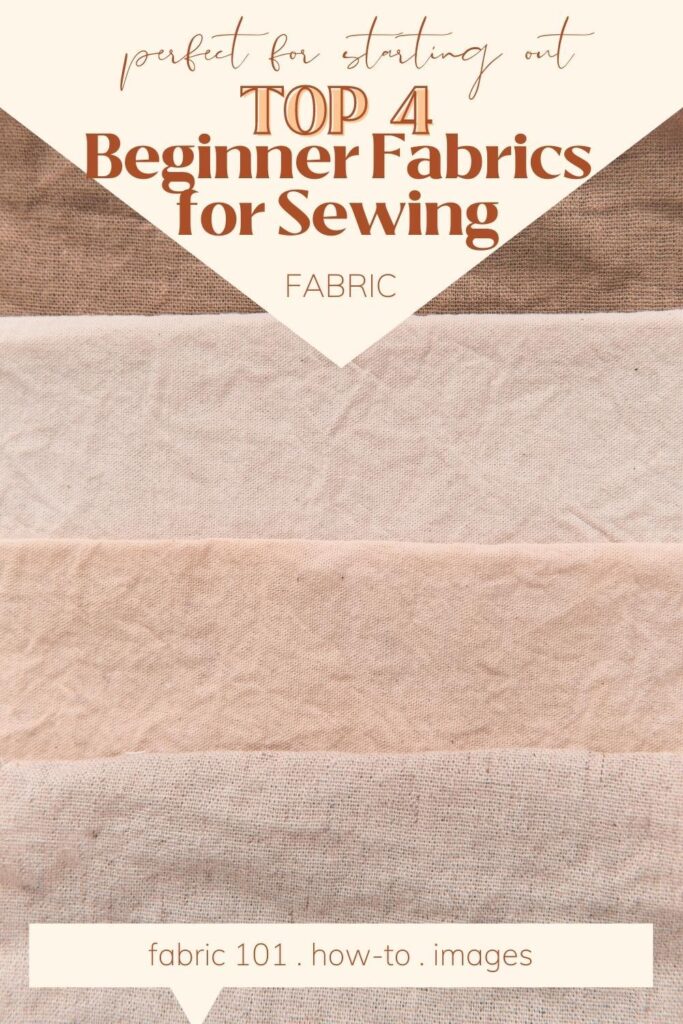
I hope this post helped you choose the best fabric for your sewing project. Which material will you be sewing with for your first project? Let me know in the comments below.
